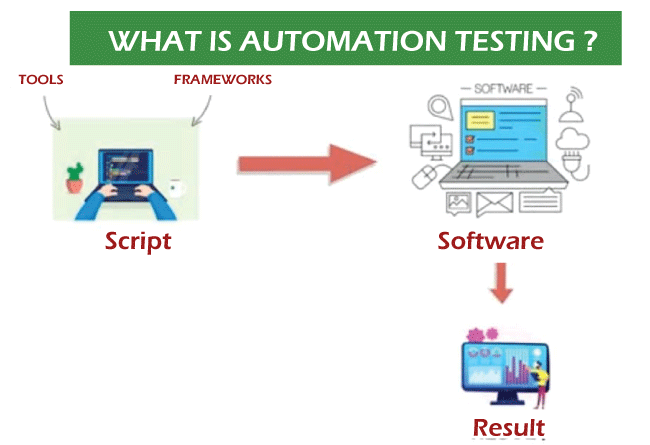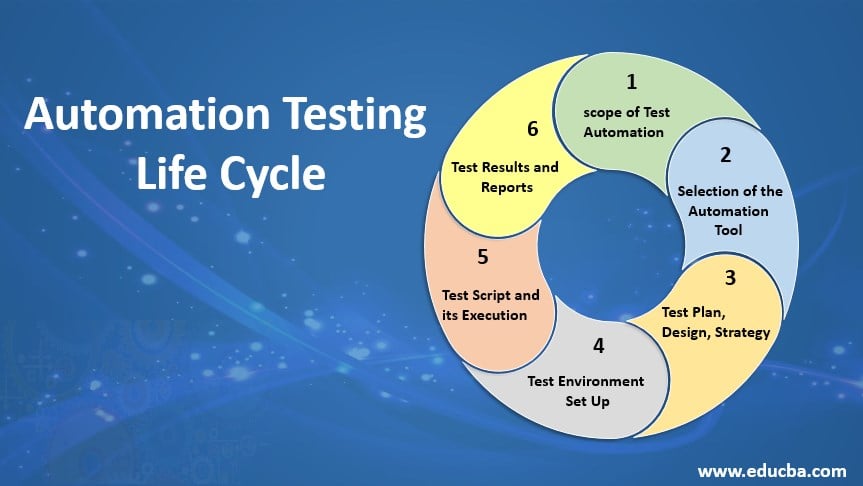Understanding Automation Testing: Tools, Techniques, and Benefits
Making Certain Success in Automation Evaluating: Trick Metrics, Obstacles, and Solutions Every QA Group Should Know
In the realm of software application top quality assurance, the landscape of automation testing is ever-evolving, demanding a thorough approach to ensure smooth procedures. The journey to grasping automation testing is paved with nuances that call for a keen eye for surveillance, analysis, and continuous enhancement. As the sector pushes forward, the mission for optimum efficiency in automation testing continues to be a consistent pursuit, prompting QA groups to furnish themselves with the understanding and approaches necessary for triumph.
Value of Secret Metrics
Understanding the value of vital metrics is essential for reviewing the performance and effectiveness of automation testing processes. Secret metrics work as quantifiable actions that provide beneficial understandings right into different facets of the screening process, such as test insurance coverage, examination implementation time, flaw density, and test instance effectiveness. By evaluating these metrics, QA groups can determine bottlenecks, inadequacies, and locations for improvement within their automation testing structure.
One critical aspect of key metrics is their ability to track progress and keep an eye on the overall health and wellness of the screening procedure (automation testing). They make it possible for stakeholders to make informed choices based on data-driven understandings, which can result in more effective testing approaches and better resource allotment. Furthermore, crucial metrics can help teams set sensible objectives, determine the success of automation initiatives, and show the ROI of automation screening efforts

Common Difficulties Encountered
Challenges generally come across in automation testing procedures can substantially affect the general efficiency and effectiveness of QA teams. Among the major challenges is the choice of the ideal test instances for automation. Not all examination instances appropriate for automation, and picking the incorrect ones can cause lost time and sources. Furthermore, maintaining test scripts can be a challenging task, particularly as the application undertakes constant adjustments. Examination manuscript maintenance calls for continual updates and adjustments to guarantee they mirror the existing performance accurately. One more usual difficulty is the preliminary financial investment needed for establishing up automation structures and devices. This can be a barrier for some organizations, especially smaller sized ones with minimal budget plans. In addition, automation screening might not cover all elements of screening, such as use and individual experience screening, which still call for hands-on treatment. Getting rid of these challenges requires proper planning, strategic examination situation choice, robust upkeep procedures, sufficient sources, and a clear understanding of the restrictions of automation screening.
Efficient Solutions for Challenges
To deal with the barriers experienced in automation testing, carrying out reliable services is important for improving the efficiency and efficiency of QA groups. One key service is to purchase robust training programs for QA teams to guarantee they have the needed skills to effectively make use of automation devices. Training can link expertise gaps, improve understanding of automation structures, and enhance scripting capabilities, ultimately resulting in more efficient examination production and execution.
Another essential option is to establish clear communication channels within the QA team and with various other stakeholders, such as programmers and project managers. Effective interaction aids in aligning expectations, sharing progress updates, and quickly dealing with problems or barricades that may arise during the automation screening process.

Monitoring and Evaluation Methods
Executing effective surveillance and analysis techniques is crucial for ensuring the success and performance of automation screening procedures. By making use of tracking tools, QA groups can track the efficiency of examination manuscripts, recognize traffic jams, and pinpoint locations for improvement. Real-time tracking enables for quick detection of concerns, enabling fast feedback and resolution. Furthermore, assessing test results and metrics offers valuable understandings into the quality of the software being examined and the efficiency of the testing approach.
One key technique in monitoring and evaluation is the use of control panels that combine appropriate over here metrics and KPIs in an aesthetically obtainable layout. These control panels offer a comprehensive overview of examination implementation standing, examination protection, defect patterns, and various other essential details. On a regular basis examining and assessing these control panels can aid QA groups make notified decisions, prioritize jobs, and enhance screening initiatives.
Additionally, executing automated signals and alerts based on predefined thresholds can enhance proactive tracking and timely treatment. By establishing informs for efficiency discrepancies or test failings, groups can resolve issues promptly and prevent them from intensifying. Generally, tracking and evaluation techniques play a vital role in guaranteeing the efficiency and success of automation screening campaigns.
Constant Improvement Methods
Enhancing the efficiency of automation screening procedures demands the regular improvement of strategies and techniques. Constant improvement methods are pivotal for QA groups to adjust to developing technologies and deliver top notch software items. One key strategy to improving automation testing procedures is to perform routine testimonials and retrospectives. By analyzing past screening cycles, groups can recognize traffic jams, inadequacies, and areas for enhancement. Executing feedback loops and incorporating lessons additional reading found out right into future screening structures can produce considerable enhancements over time.

Final Thought
To conclude, it is important for QA teams to recognize the key metrics, difficulties, and solutions in automation testing to make sure success. By carefully monitoring and analyzing information, carrying view it now out efficient solutions to usual obstacles, and constantly improving approaches, QA teams can optimize their screening processes and deliver premium software program products. Sticking to these techniques will eventually lead to extra reliable and reliable automation screening techniques.
By assessing these metrics, QA teams can identify traffic jams, inadequacies, and locations for enhancement within their automation screening structure.
In addition, key metrics can assist groups set sensible objectives, gauge the success of automation initiatives, and show the ROI of automation screening efforts.
Obstacles frequently encountered in automation testing procedures can dramatically impact the total efficiency and performance of QA teams. Automation testing might not cover all aspects of screening, such as use and user experience screening, which still call for hands-on treatment.In verdict, it is important for QA teams to comprehend the key metrics, difficulties, and options in automation screening to ensure success.